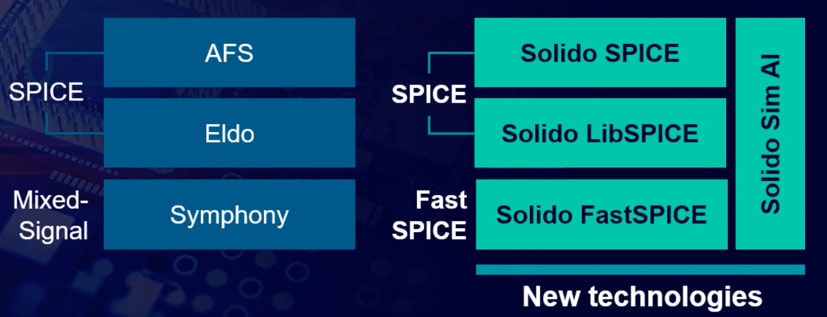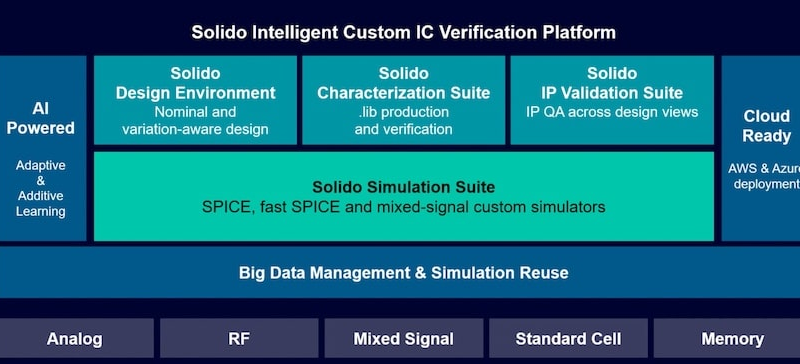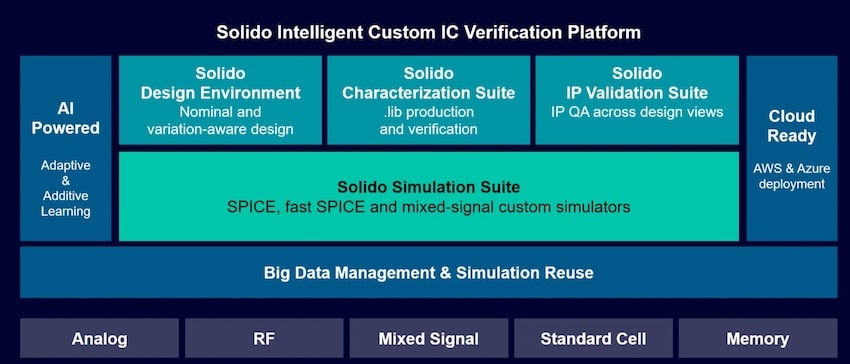Ba bộ mô phỏng mạch mới của Siemens EDA
The week before DAC I had the privilege to take a video call with Pradeep Thiagarajan – Product Manager, Simulation, Custom IC Verification at Siemens EDA to get an update on new simulation products. I’ve been following Solido for years now and knew that they were an early adopter of ML for Monte Carlo simulations with SPICE users. Using generative AI with LLM has become quite popular with vendors like OpenAI, Google and Microsoft all updating their product offerings. This trend is driving semiconductor design starts, increasing system complexity, rising semiconductor costs, all while our universities are not attracting enough students to become engineers. Many of my EDA and semiconductor peers are now in retirement age. So, AI has the promise to help meet these challenges by improving productivity.
Over the years the software tools at Siemens EDA have infused AI technology where it makes sense:
- Emulation, Prototyping – Veloce
- Digital verification – Questa
- Custom IC verification – Solido
- DFT – Tessent
- Place & Route Floor planning – Aprisa
- DRC, LVS, DFM – Calibre
- PCB design exploration – HyperLynx
- PCB design – Xpedition
The news is that for Custom IC verification, there are three new product announcements under the name of Solido Simulation Suite. Let me show you where these new simulators fit into the product family.
Solido Simulation Suite has three new technologies with descriptive product names to fit different requirements:
- Solido SPICE
- Solido LibSPICE
- Solido FastSPICE
The motivation for adding three new circuit simulators is to meet the growing need from 7nm and smaller nodes for higher performance and capacity while maintaining accuracy. Yes, the existing SPICE tools AFS and Eldo continue to serve customers and will remain supported and enhanced.

The Solido Design Environment was launched in 2023 at DAC, followed by the Solido Characterization Suite, and then the Solido IP Validation for QA was announced in May, so this news of three new simulators continues the progress at Siemens EDA. The Solido R&D headcount has doubled in just the past 3 years to bring all these advancements to life. Solido Sim AI is a technology inside of each new simulator to further accelerate the many internal computations, like: netlist parsing, model evaluation, partitioning, and matrix solving. The transistor models for 2nm and 3nm nodes are quite complex now, so using acceleration helps reduce run times.
For SPICE accuracy engineers would run Solido SPICE, for smaller designs and library characterization runs it would be Solido LibSPICE, and for the largest designs including memories the Solido FastSPICE tool is the best choice. These simulators also integrate nicely with other Siemens EDA tools, like mPower for EM/IR analysis, ESD analysis with Calibre PERC, 3D IC electro-thermal with Calibre 3DThermal, and analog fault analysis with Tessent Defectsim.
Looking at customer circuits the speed improvements in Solido SPICE showed a 2X – 30X verification speedup at full SPICE accuracy, Solido LibSPICE had 2.3X to 5.5X speedups across a variety of library cell runs, and Solido FastSPICE touted speed improvements ranging from 13.8X up to 68X. Early customer endorsements were noted from tier-one semiconductor companies: Silicon Laboratories, and Samsung Electronics. Foundry endorsement from Intel Foundry too.
Summary
The challenges of designing an SoC or chiplet with nm process nodes continue to grow, demanding higher capacity circuit simulations and even integration with other analysis tools. Siemens EDA has just launched three new circuit simulators that span a spectrum from SPICE accurate to libraries to the largest netlists, and the early customer results show dramatic speed improvements while maintaining accuracy. Integration with tools for EM/IR, ESD and 3D IC make these new simulators more valuable. Many EDA vendors launch a new circuit simulator once every 3-5 years, but having three new circuit simulators all at one time is something that I’ve never seen done before, so kudos to the development teams at Siemens EDA for pulling this feat off.
Related Blogs
Share this post via:

